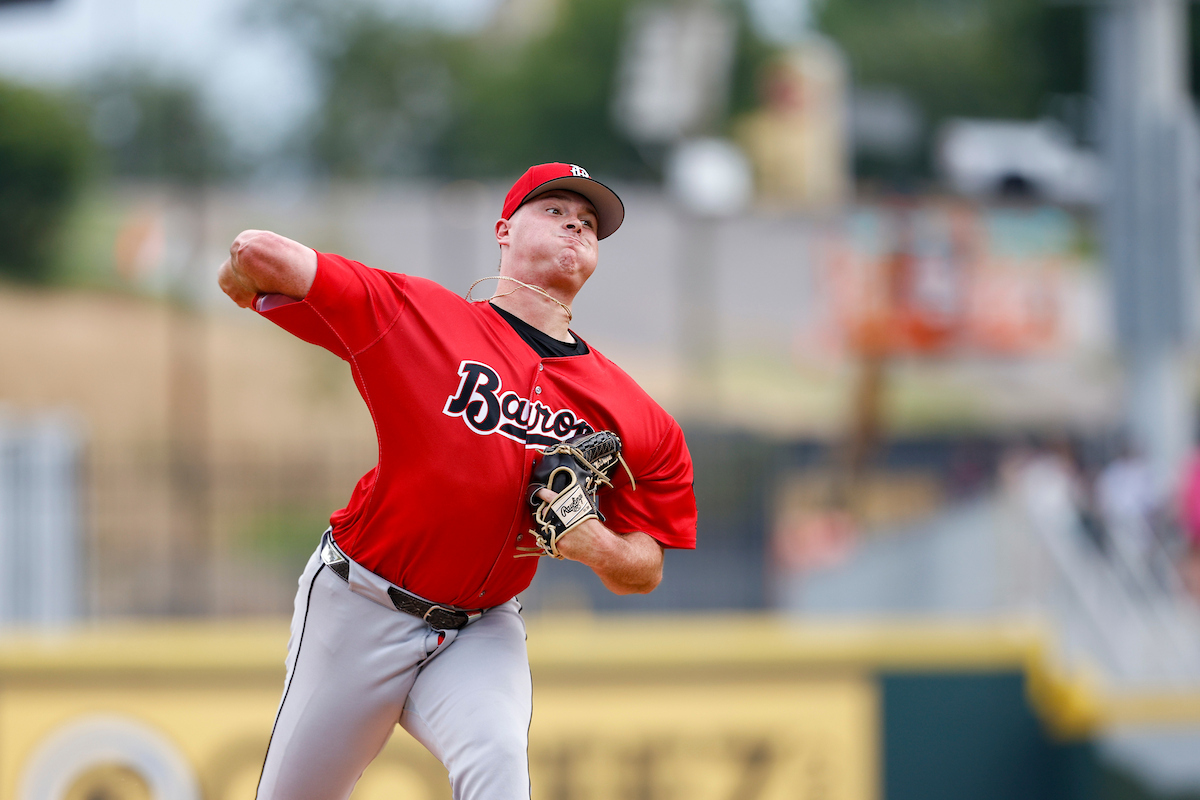PHOENIX -- With respect, that did not go well.
Drew Thorpe fell behind repeatedly in a three-run first inning Sunday, prompting him to use a vulnerable fastball more (30 of 60 pitches) than he would ever want to in order to get back into counts. Neither issue abated with time, leaving the 23-year-old right-hander with a ghastly closing line. It's nice that Thorpe experienced a strong debut outing in Seattle to validate that his stuff can play in this league when executed, because most statistical traces of it has been blasted away to a 8.64 ERA.
“Just kind of didn’t have my best stuff, I didn’t have my best command, obviously," Thorpe said postgame. "It’s pretty hard to work around it when you don’t have it with the stuff I have.
"My fastball sets everything else up, and it was all over the place today. Clearly I’m going struggle."
Thorpe is a rookie who's thrown fewer than 200 minor league innings and had a bad second career major league start. But when the headliner of the Dylan Cease trade has an outing with no redeeming qualities amid a season with few redeeming qualities of its own, there's a chilling effect for a fan base that has long since grown frigid toward the organization's future.
"Who doesn’t have bad starts up here? it’s going to happen," said Pedro Grifol. "He’s just got to forget about this one and get back to work and get ready to go in five or six days, whenever his turn is again."
The White Sox believe Thorpe's ~90 mph four-seam fastball can play at the top of the strike zone. There are multiple reasons they believe it has a brighter future than the 97.1 mph average exit velocity the Diamondbacks submitted it to on Sunday, but none of them have to do with using it even 50 percent of the time or challenging hitters with it in 2-0 counts. It's more about believing his deception and command will enhance it, rather than it has the velocity and ride to beat hitters who are gearing up for it.
"When you have guys with hidden arm action, it tends to play above the velo," said senior advisor pitching Brian Bannister of Thorpe short-armed throwing motion. "So the [Lucas] Giolitos of the world, Cutter Crawford in Boston, with those guys, [the release point] pops up in the back of their heads."
That explains why the Sox don't panic when "FOUR-SEAM FASTBALL, 87 MPH" pops up on the scoreboard sometimes, but a roadmap to success for Thorpe would probably look more like the 28/38 fastballs/changeups split of his debut. Maybe, with time, that will be true for more guys than just Thorpe. His below-average velocity just lays the conflict bare.
"Even here early on, fastball usage was a little high," Bannister said. "It was something I talked about with [Ethan] Katz and [Matt] Wise. You look at Philly and Boston, they're leading the league in pitching right now, they're throwing the least amount of four-seam fastballs. With where the game's at, Andrew Bailey describes a fastball is like a jab. You don't throw a lot of jabs if you want to knock a guy out. You want to use your jab selectively and then you want to save your better pitches to get guys out. I think we're just throwing less fastballs because that's where you give up damage, particularly on the inner half of the plate."
Every pitcher on planet Earth needs to command their fastball to succeed, but Thorpe speaks specifically about just using it to establish locations "that set up every other pitch in my arsenal," especially his signature changeup. Part of the changeup's brilliance is how much it mirrors the fastball and creates an environment where hitters cannot discern the velocity of the pitch by its shape. But that also means that the pitch lacks--intentionally so--the dropping action of Jonathan Cannon or Erick Fedde's changeup.
"Every moment profile generator say it's a terrible pitch and I might as well never throw it, but the results speak for themselves," Thorpe said on Saturday afternoon. "It's just so different metrically from most changeups. I can't really explain why or how. I try to keep it pretty much as straight as possible."
But judging the viability of Thorpe's changeup-centered approach is complicated by the current state of his glove-side breaking balls. Thorpe has a cutter and slider that he turned to slightly more often in his debut in Seattle, but it might have looked odd, since a couple of the whiffs on the cutter looked like opposing hitters swung under it--suggesting the pitch backed up on him.
Thorpe explained that this is a misconception, and that the purpose of having two distinct pitches that move to his glove side is that one drops like a typical slider, but the cutter stays up. The dynamic is designed to force even hitters that have recognized the pitch as not a fastball, to make an additional decision about what height it will stay at. The only catch is that the pitches are blending at present.
Compared to last year, Thorpe's cutter is dropping three inches more and down two miles per hour from the 88 mph it hit consistently in 2023. Thorpe has countered by generating a bit more vertical drop in his slider, but the cutter has to play firmer to really restore the desired dynamic.
"Particularly his cutter is more impactful to a lefty and we don't want that to lose its depth," said pitching coaching Ethan Katz. "Because he's going to try to throw that up in the zone more and if it's breaking down more than we want, unless he's trying to go back door with it, it can be problematic."
Grifol alluded specifically to Thorpe making his next start, and the White Sox didn't speak about any of these issues as untenable. Instead, they have touted Thorpe's maturity and processing skills, his ability to self-correct and suddenly that skill is going to be put to the test more than his signature changeup.
"I just love how he goes about his work," Bannister said. "He knows who he is. He’s very hard on himself in the pen as far as execution, so I think he’ll keep getting better and better because he has the whole arsenal, and as he understands these hitters, we’ll wait to see their adjustment to him, and once that happens, we’ll have to adjust back."





